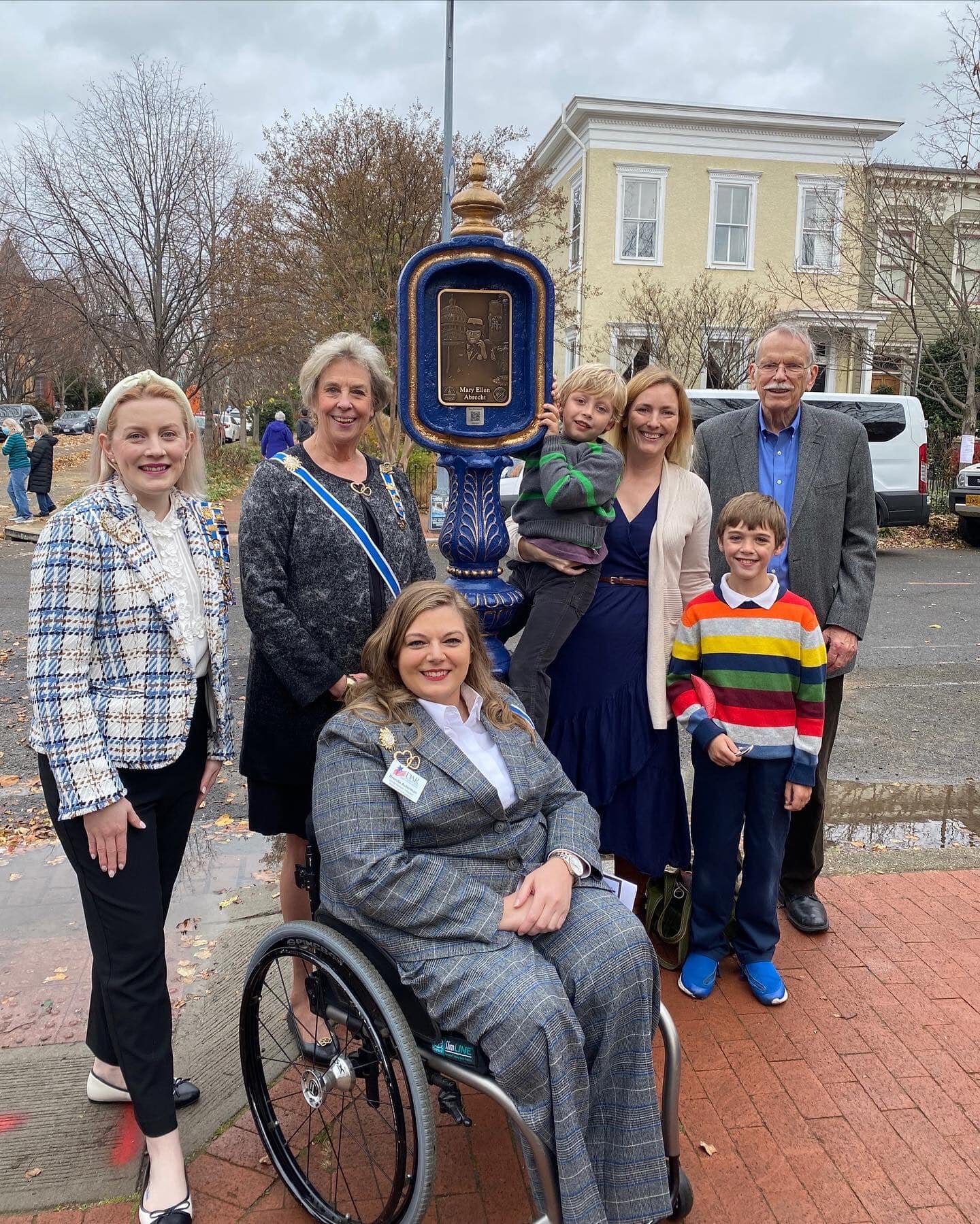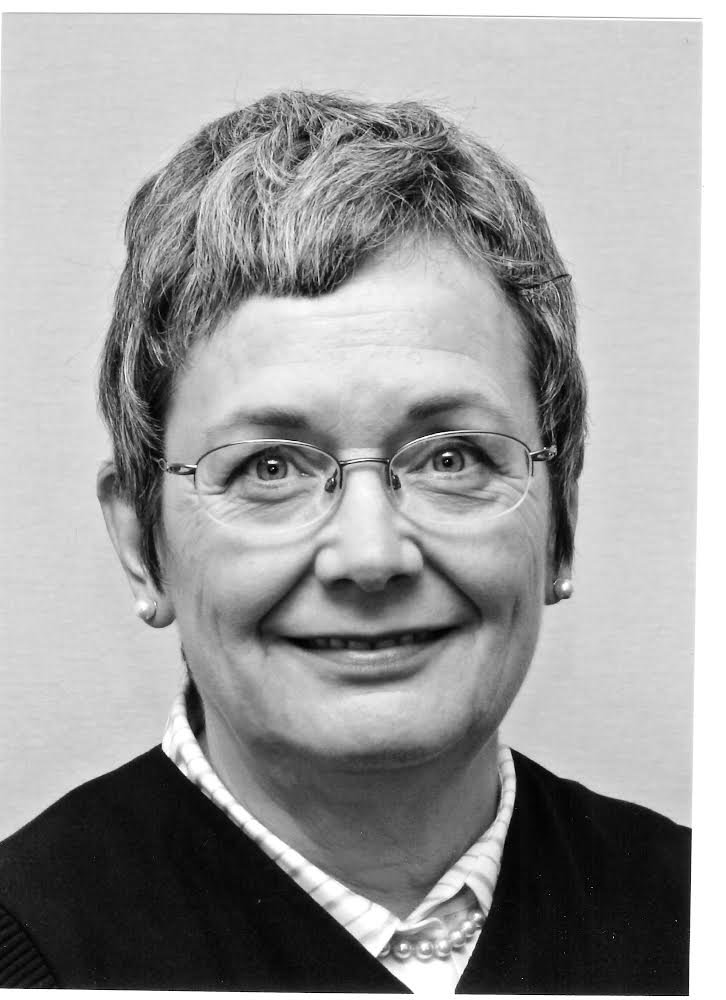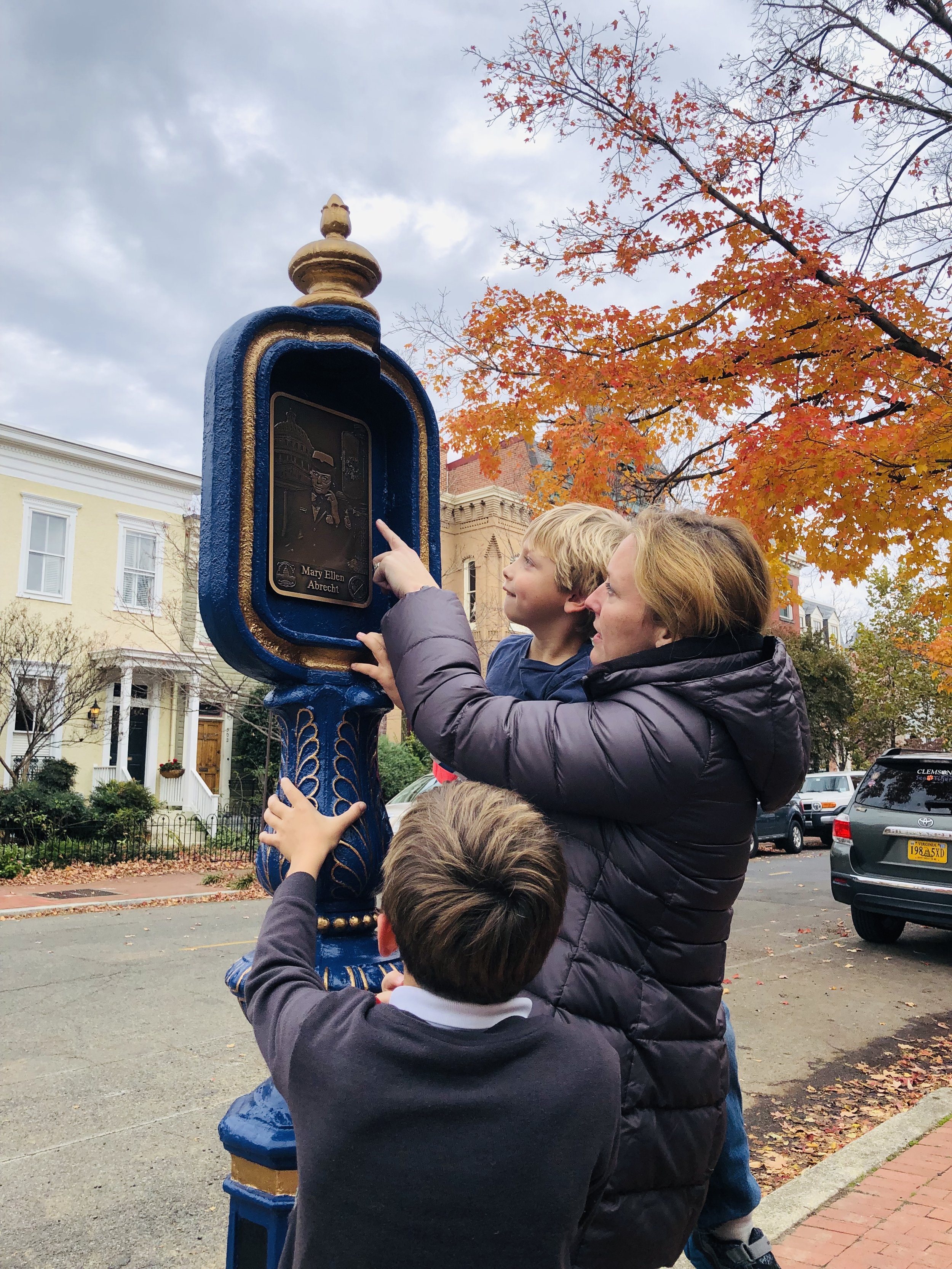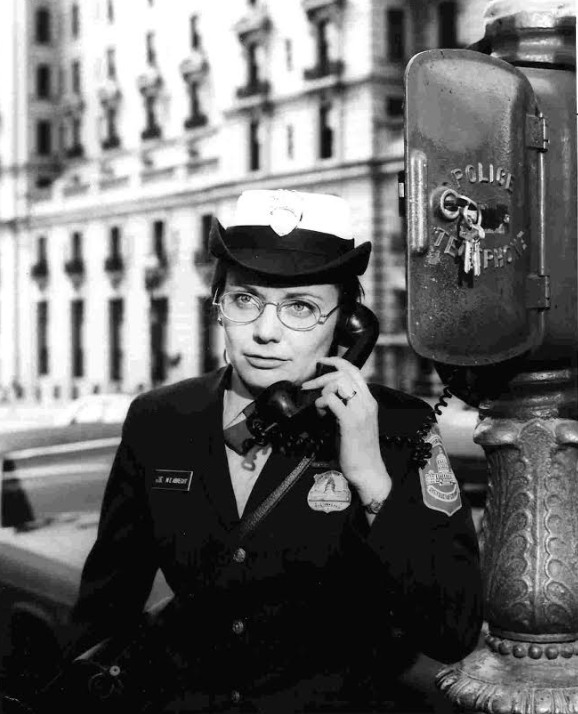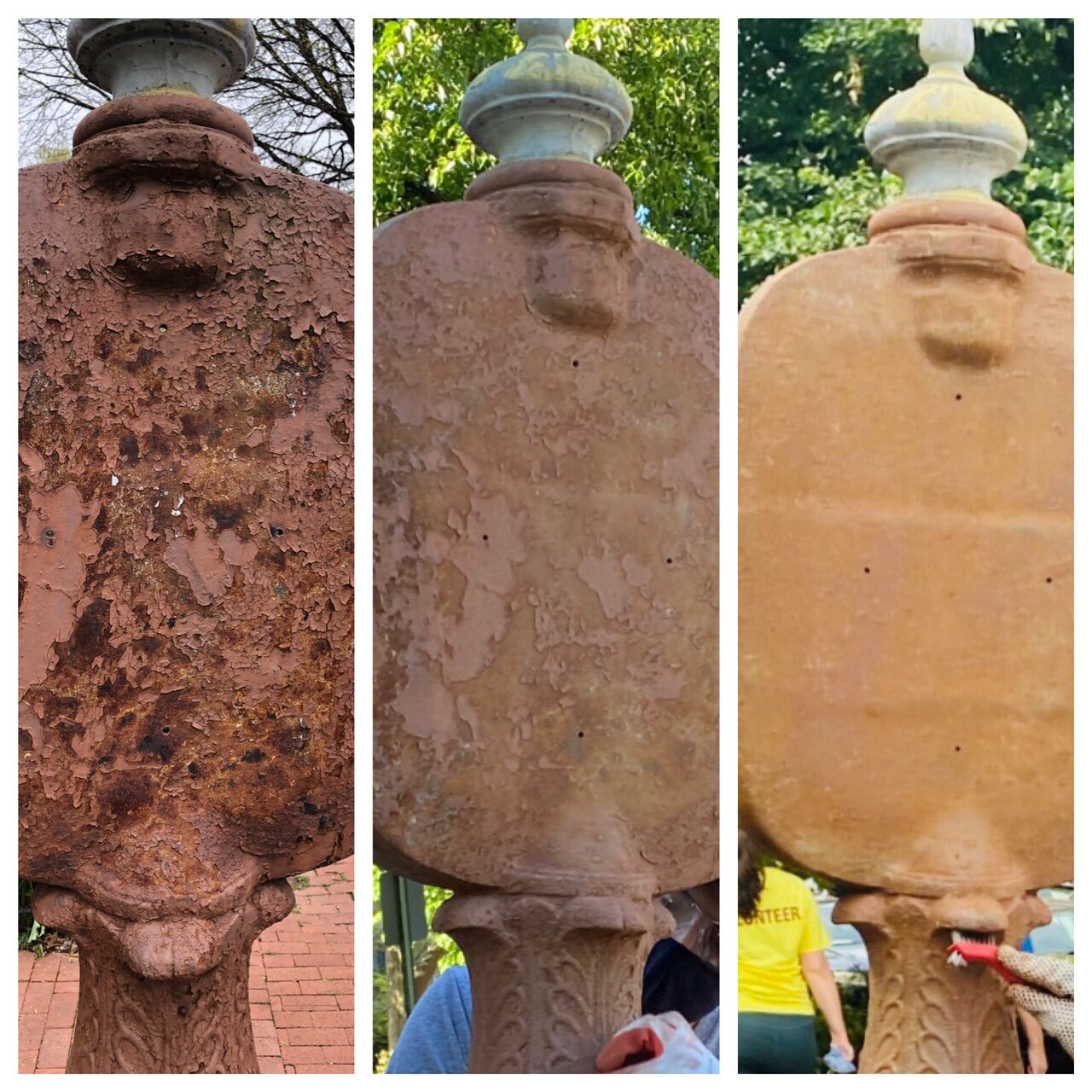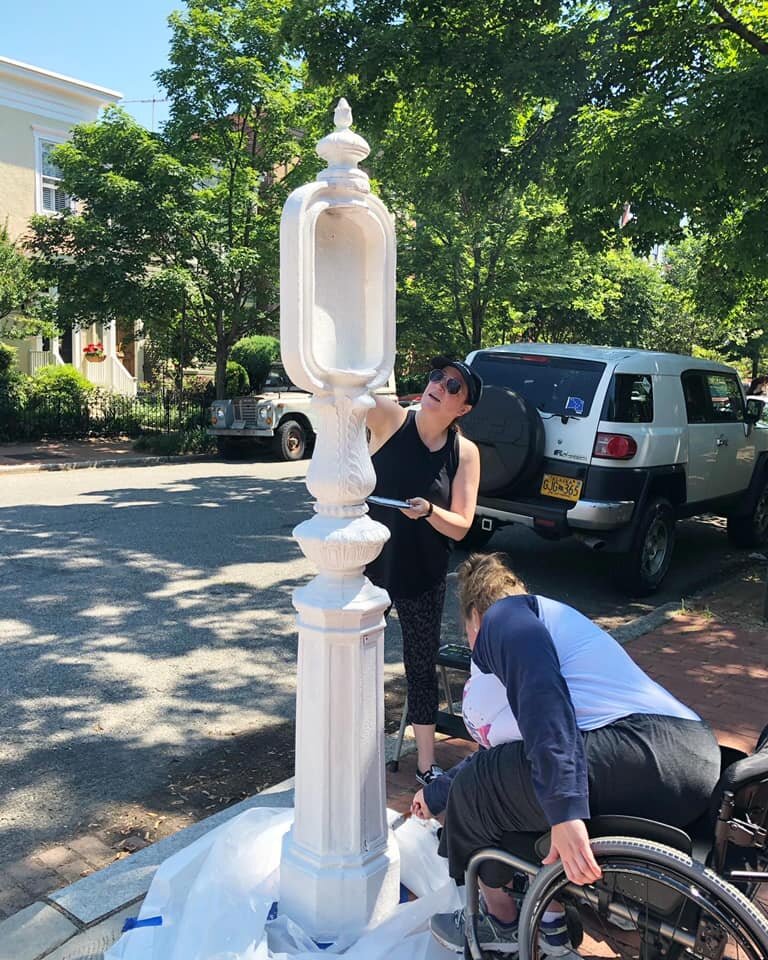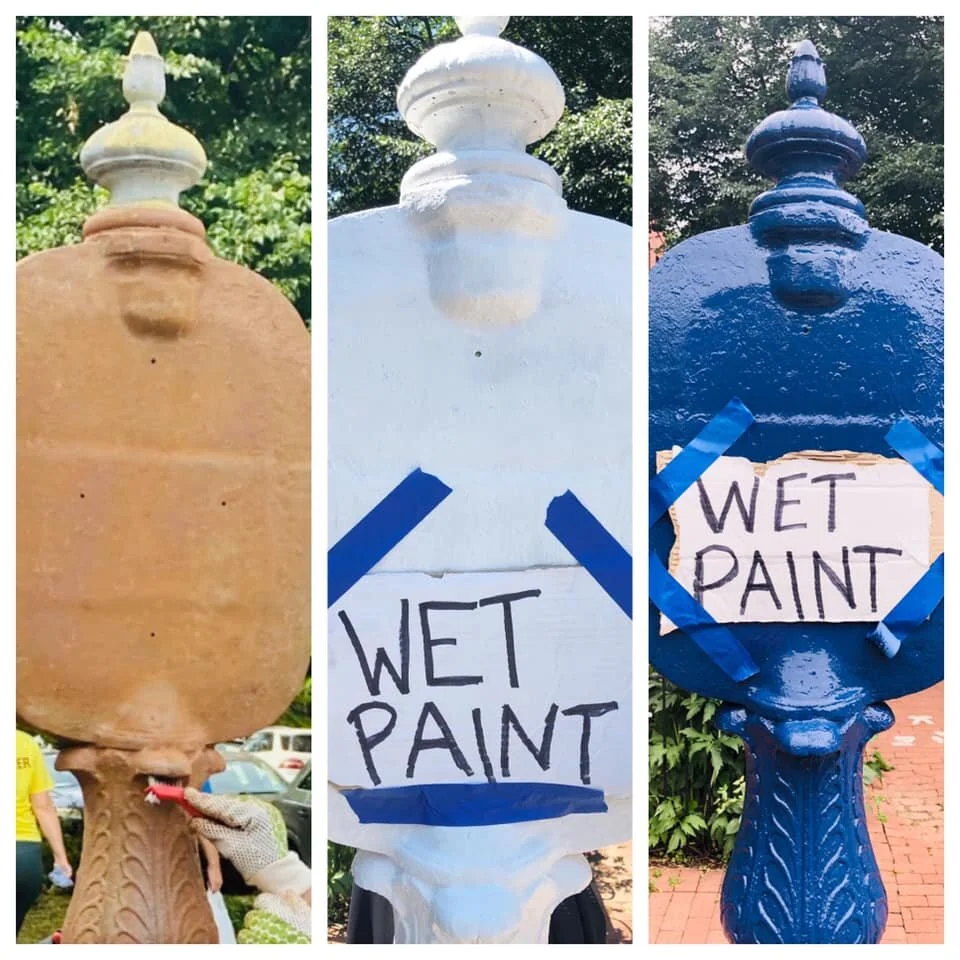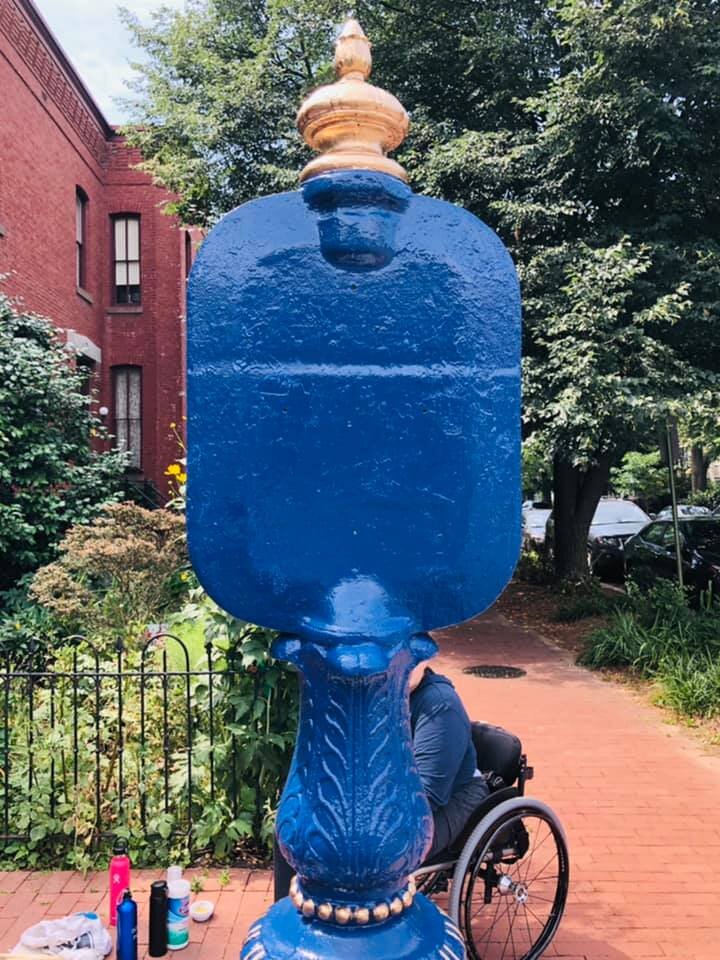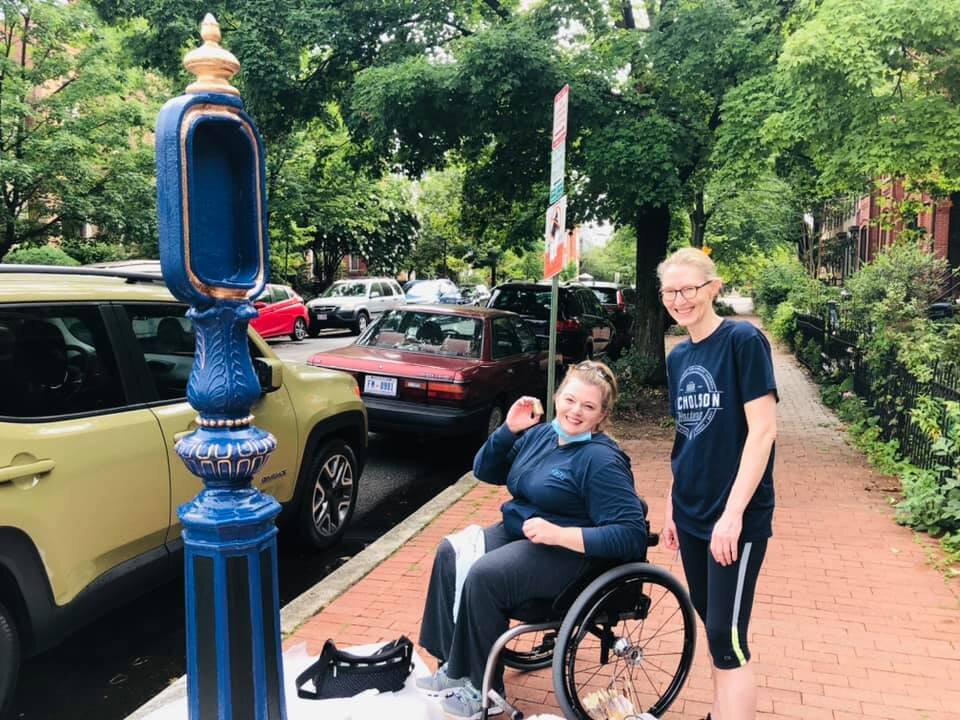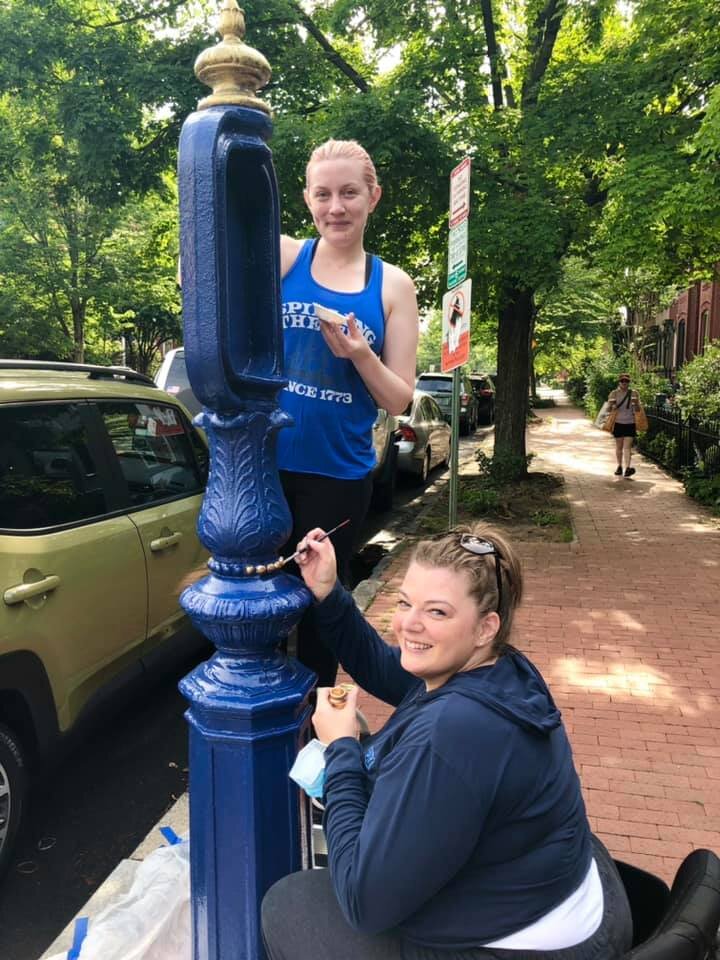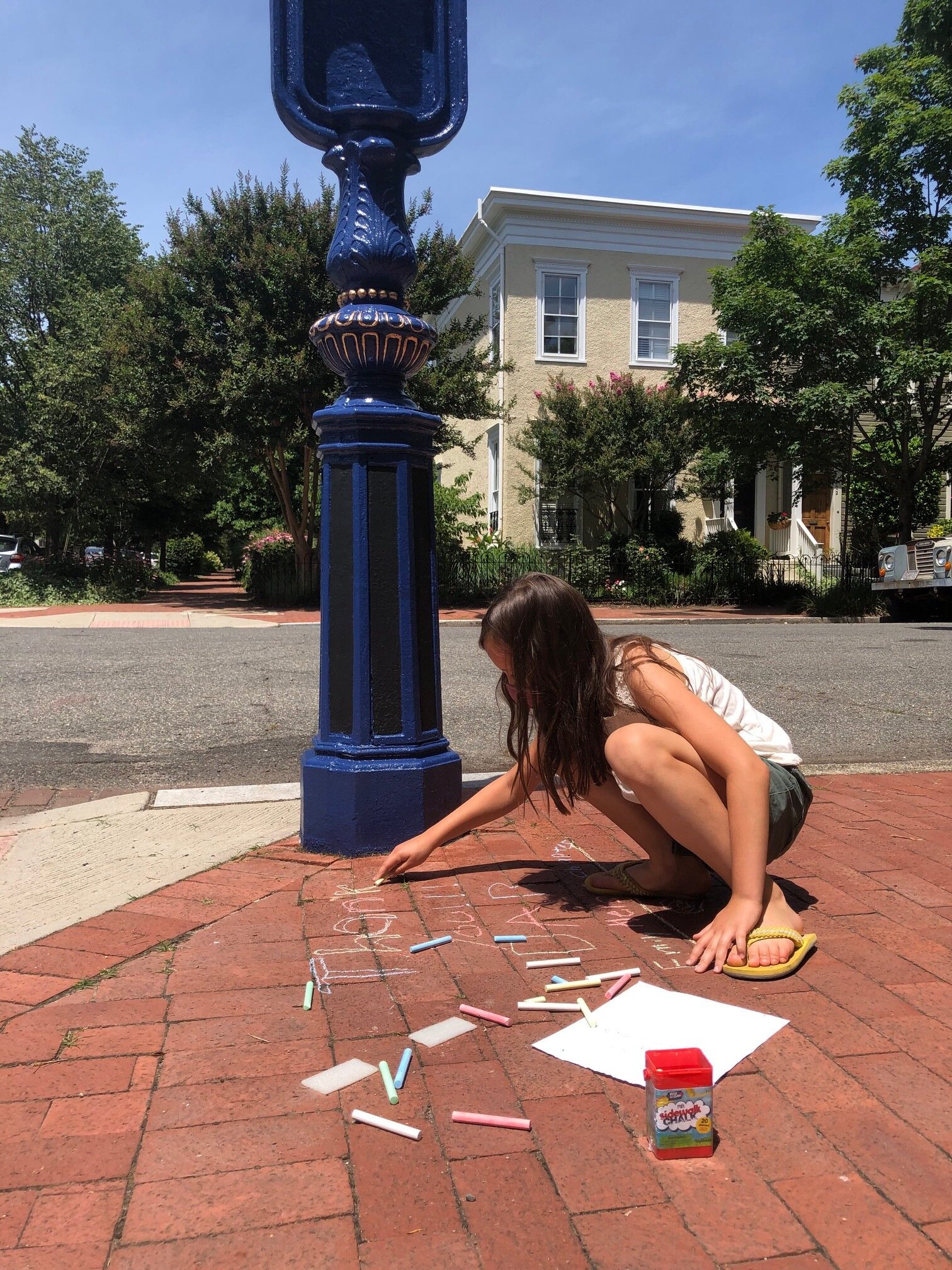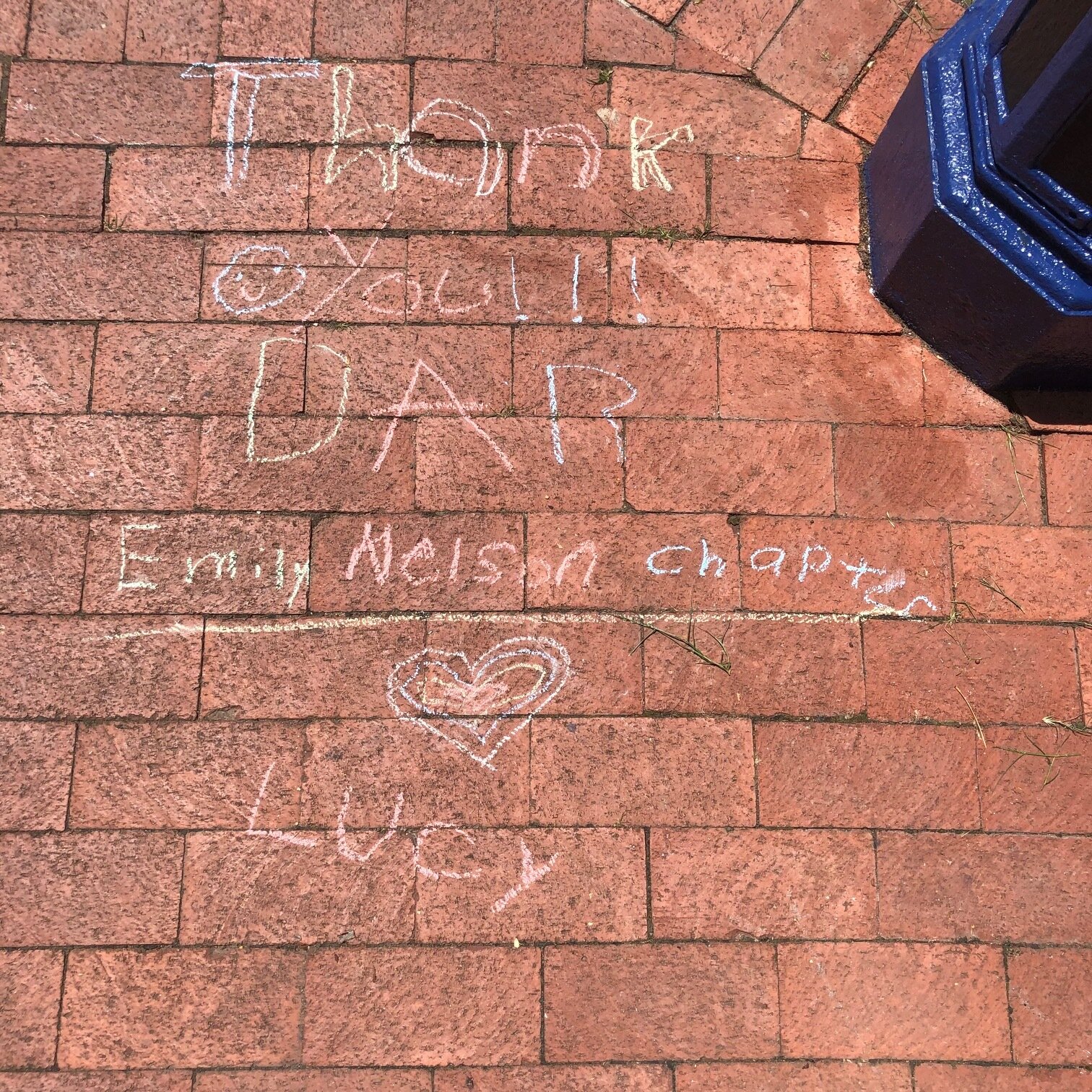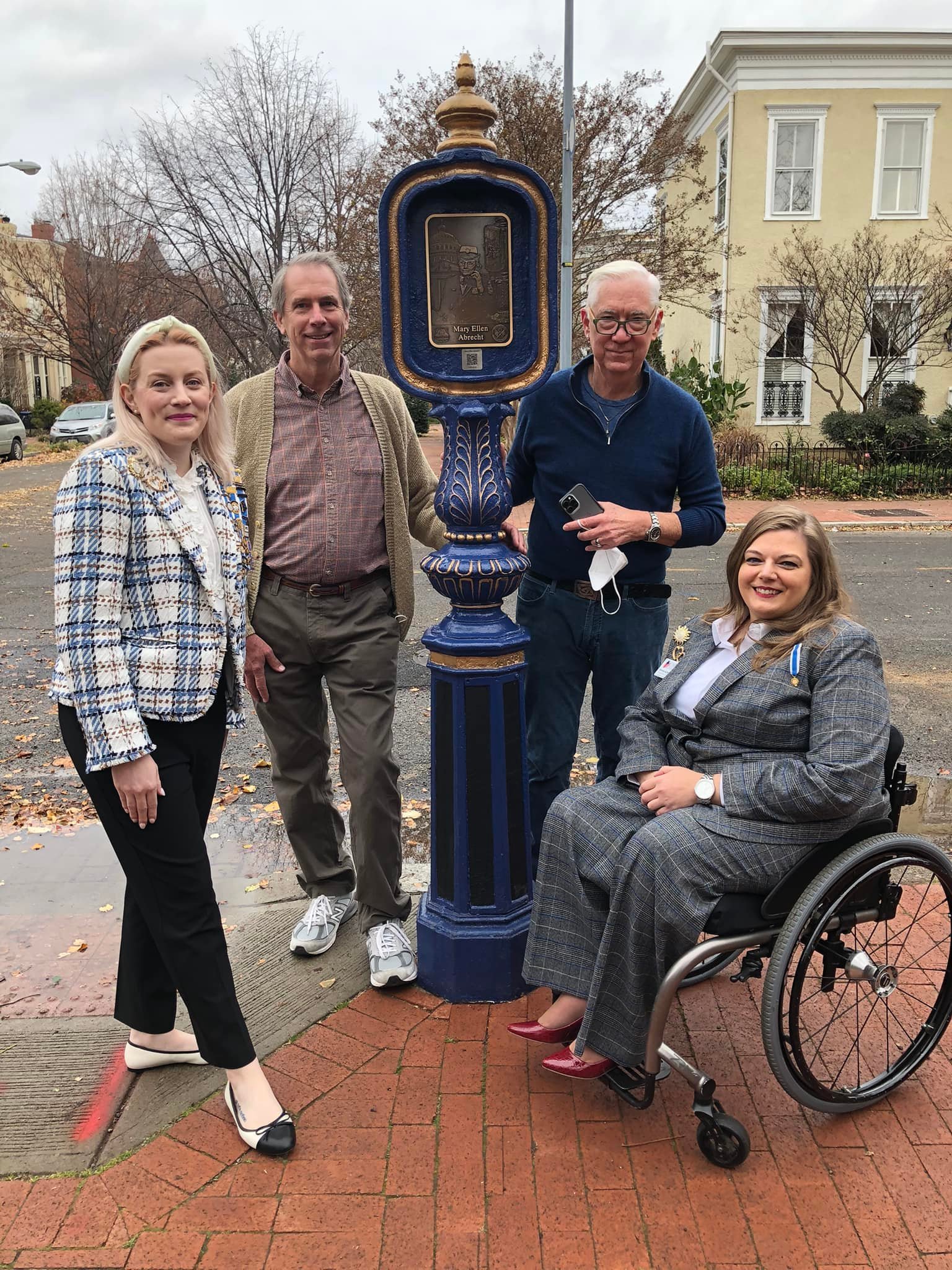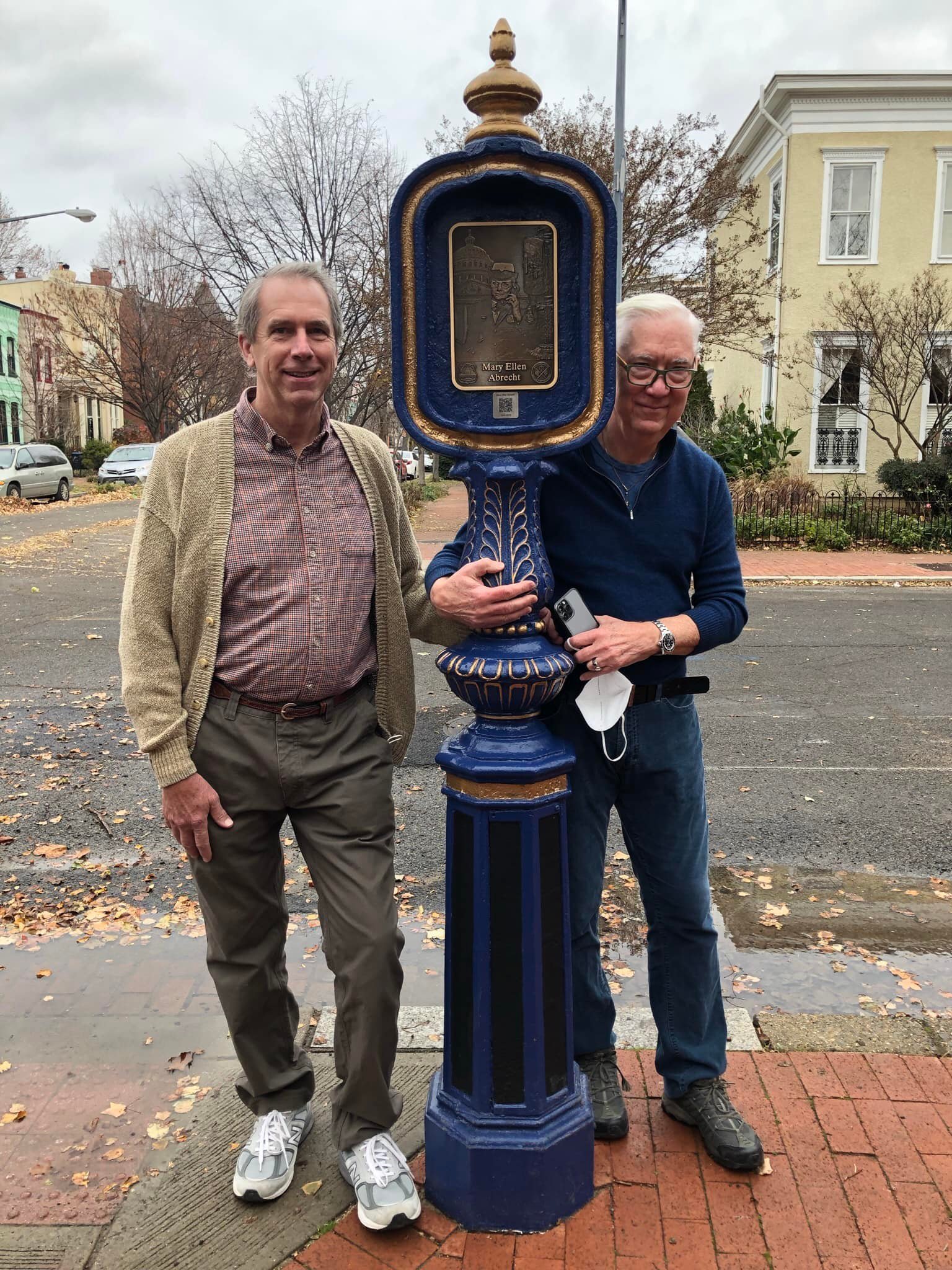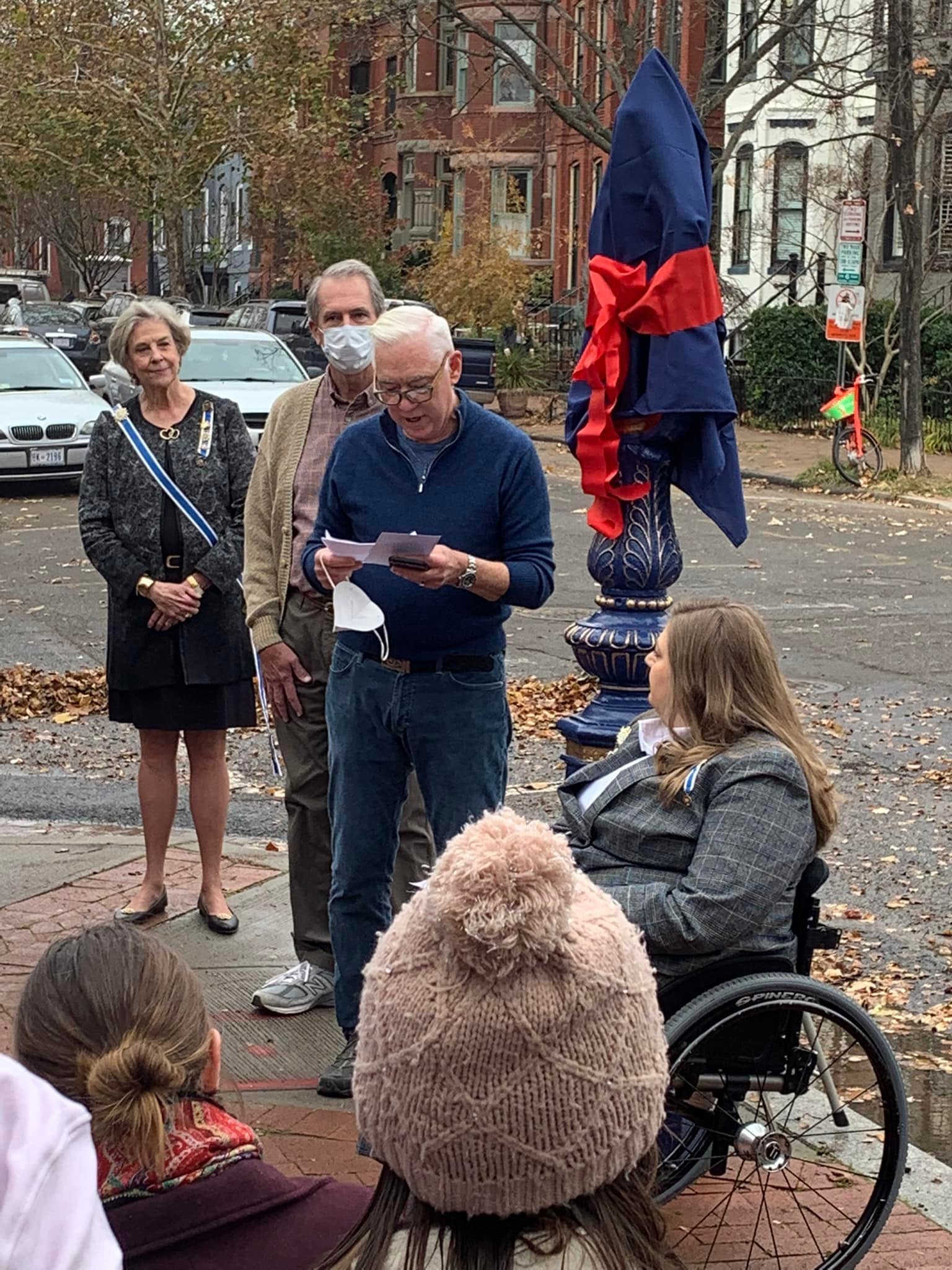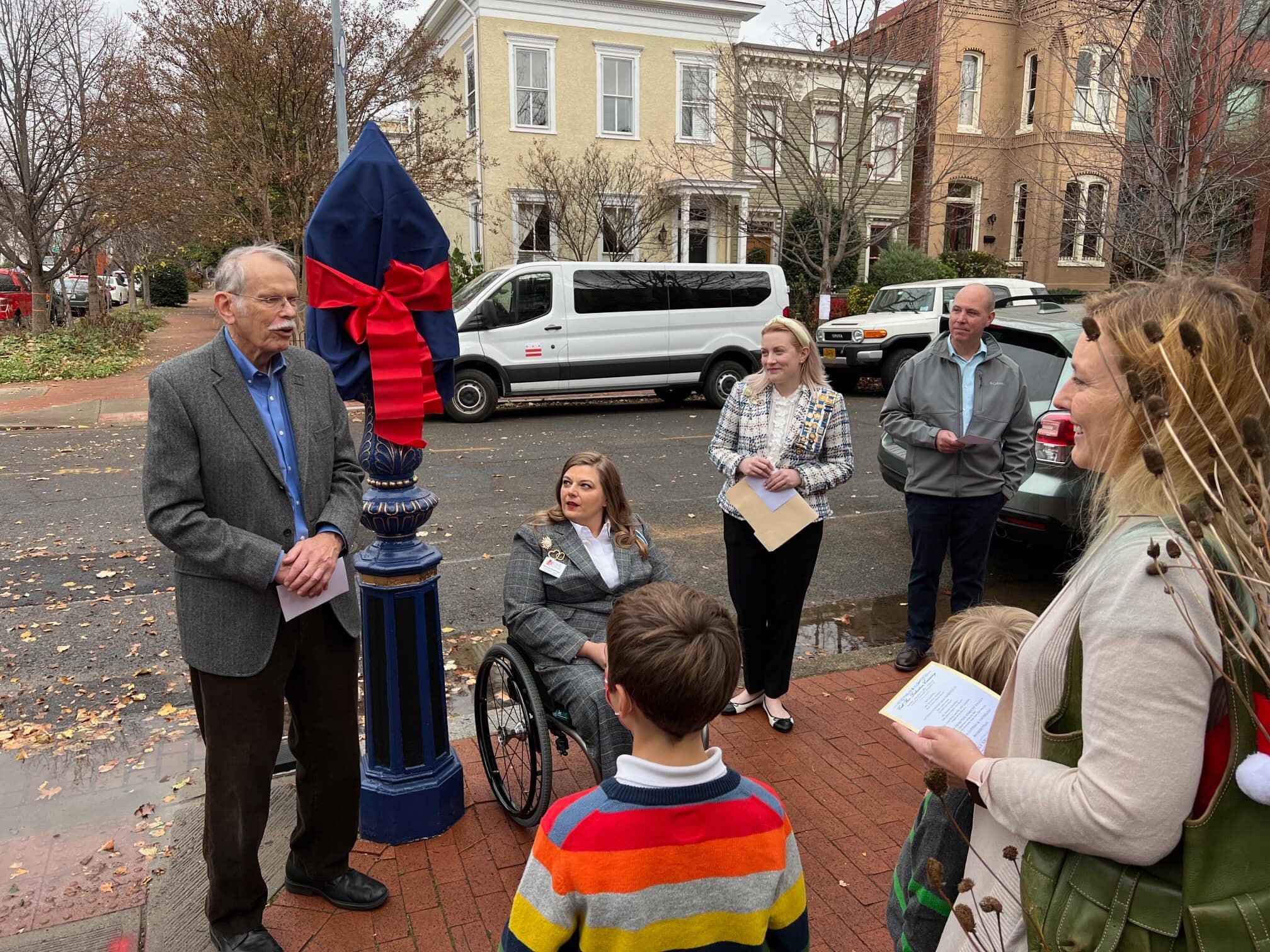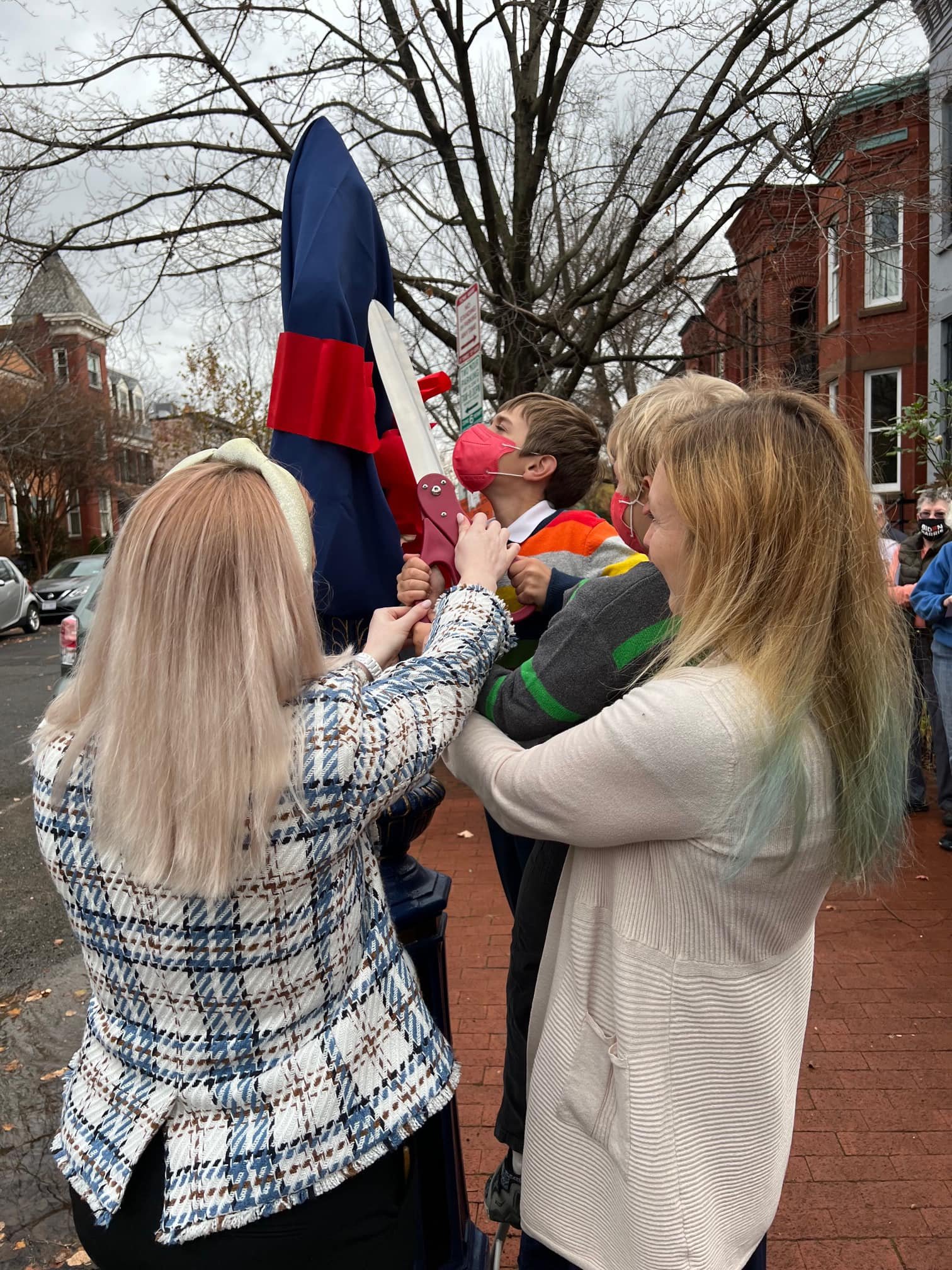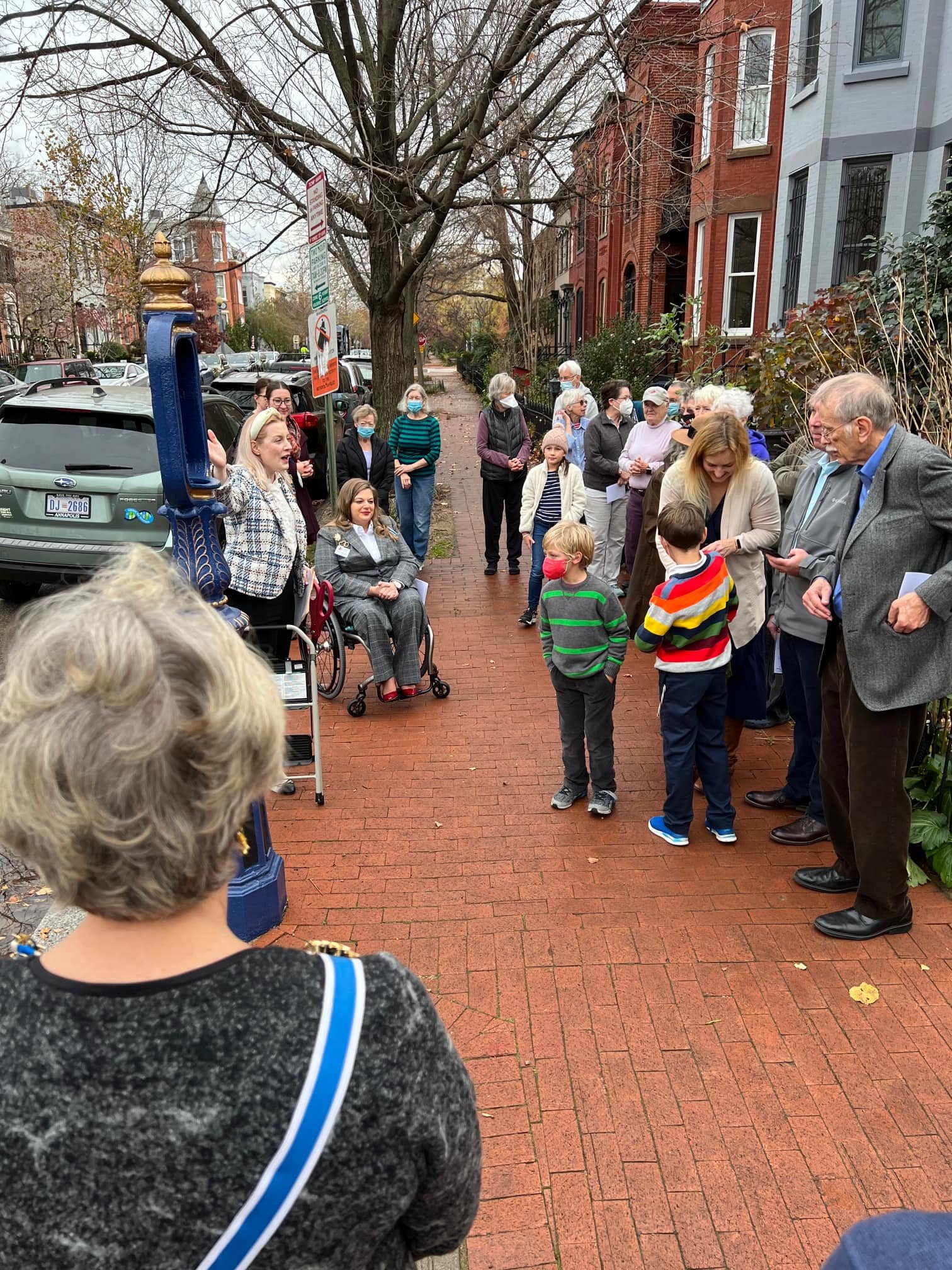Judge Mary Ellen Abrecht 1945-2018
In support of the DCDAR 2020-2022 State Regents Project, the Emily Nelson Chapter adopted a police call box in the historic Capitol Hill neighborhood. During our initial assessment of the call box in May 2021 we met two locals who were interested in our project. These two gentlemen, Jeff & Gene, became our biggest cheerleaders throughout the project supplying volunteers with water on hot days, trash bags and paper towels, they served as call box watchers during the paint drying stages, and most importantly, were our lifeline to the community and suggested we honor the incredible, Judge Mary Ellen Abrecht. It was our honor to dedicate this historic Police Call Box to the late, Judge Mary Ellen Abrecht. We hope this piece of history serves as a piece of joy and inspiration to passersby and the greater community.
Photos: Top-Chapter Regent, Rachel Norman, DCDAR State Regent, Cindy Hays, Chapter Vice Regent, Brenda Auterman with Rachel Abrecht-Litchfield and her children, Gary L. Abrecht at the dedication ceremony December 2021.
L-R. DC Superior Court Judge. Rachel Abrecht-Litchfield and her children. Mary Ellen Abrecht on her patrol beat using a call box. Mary Ellen Abrecht’s husband, Gary L. Abrecht, a former D.C. police deputy chief who retired as chief of the U.S. Capitol Police with his daughter and grandchildren.
Photos courtesy DC Superior Court, Washington Post, Emily Nelson Chapter.
Mary Ellen Benson was born in 1945 in Massachusetts. She graduated from Mount Holyoke College and studied for one year at Union Theological Seminary. She married Gary Lorne Abrecht and settled in DC in September 1968. They lived in a house near the call box that had been in her family since it was built in 1905. After seeing a flyer advertisement she started working for the Metropolitan Police Department as a plainclothes Policewoman in the Youth Division. During that time she studied law part time at Georgetown (JD 1974), and lectured around the country urging police departments to expand the role of women in law enforcement to be the same as men. Mrs. Abrecht was tasked with coordinating a pilot program of 100 female police officers on the beat in 1972. After she left the Police Department in 1975 as a uniformed Patrol Sergeant she became a criminal prosecutor in the Office of the United States Attorney for the District of Columbia where she served in a variety of assignments until 1990 when she was appointed by the President to be a judge on the Superior Court.
As a judge she served in turn in the Family Division, the Civil Division and the Criminal Division where she presided over murder cases at the height of the crack epidemic. In 2003 she took on Senior Status for twelve years in order to work part time and travel with her husband who had retired as Chief of the U.S. Capitol Police. As a judge always near the top of alphabetical listings, she was often called upon to perform marriages and volunteered for service when there was an influx of gay couples after same-sex marriage became legal in 2009. She also became a colored pencil artist and had many pieces selected for juried art shows on Capitol Hill. She was a docent at the Supreme Court where she gave lectures and tours.
Source: HillRag, Washington Post obituaries.
Call Box Restoration, the Journey
Historic Police Call Box Restoration as of June 26, 2021
Historic Police Call Box at beginning of project May 1, 2021
Pre-work
Emily Nelson Chapter worked with the DCDAR Historic Preservation Committee to secure a DDOT permit to work on prepping the call box. This included scraping years of rust and dirt off of the box as well as sanding off previous layers of paint. Keeping historic preservation at the forefront, no power tools or chemicals were used, just lots of elbow grease.
Chapter members began by scraping and sanding off rust and previous layers of paint.
It took three work days to get the call box to an even layer.
What is a call box anyway?
Following the Civil War, Washington, D.C. connected its first call boxes to its fire department and later to its police headquarters. By 1891, all police precincts in the District contained patrol call boxes, and dozens of fire alarm call boxes were located across the city. From their introduction until the 1970s, the call boxes served as a vital resource for the District’s emergency services. Their legacy continues to this day, adding cultural and historical value to the nation’s Capital.
Fire boxes were painted red. Police boxes were painted blue. Designs of the box and the column it sat on could vary. Typically, fire boxes were shaped like little houses. Police boxes were rectangular, with rounded corners. While fire boxes were meant to be used by the public to report fires, police boxes were for police use. Officers on foot patrol had brass keys they used to open the boxes on their beat and report back to their precinct, first telegraphically and later by telephone. Lifting the receiver would connect with a switchboard operator who would note the time the officer had checked in. If an officer didn’t check in, police cars would be sent on a search.
The advent of radios in police cars and on fire equipment in the 1950s spelled the end of the call boxes. But it was a slow departure as the fire department’s boxes were in use until the 1980s. That’s more than 100 years of service — amazing, when you think about how quickly today’s computer-based products go out of date.
At their peak, there were about 1,500 boxes in the District. In 2000, the city prepared to gather up the 700 or so that were still on the street, their mechanisms removed. That’s when Cultural Tourism D.C. suggested turning some into works of art reflecting the communities in which they stood. The District’s Department of Transportation painted primer on the survivors, stabilizing them.
By the time the “Art on Call” project wrapped up in 2009, 145 boxes had been transformed in such neighborhoods as Mount Pleasant, Sheridan/Kalorama and Capitol Hill. (Source: Washington Post, NPR)
The Emily Nelson Chapter is proud to have restored this call box at 5th & A St. SE in the historic Capitol Hill district of DC and we loved getting to know the local residents during the process. We hope the new call box will be an educational resource that brings joy to passersby and residents alike.

